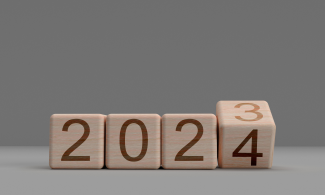
6 Financial Actions To Take Before the End of 2023
The end of 2023 is fast approaching and it’s time to take stock of what you can do now to end your year on a financially strong note.
We know that the end of the year can get busy, however, there are several ways you can optimize your taxes before the end of the year and important dates and deadlines you need to be aware of.
To help, we’ve compiled a comprehensive list of key dates, deadlines, and everything you need to support your wealth planning before the end of 2023.
6 Financial Actions To Take Before the End of 2023
The following are six important financial actions you should consider taking before the end of 2023:
- Consider tax loss harvesting
- Maximize your HSA contributions
- Make 401k catch-up contributions
- Give annual exclusion gifts
- Make qualified charitable distributions
- Meet your Required Minimum Distributions
1. Consider Tax Loss Harvesting
Tax loss harvesting involves selling off underperforming assets like stocks, funds, and other investments at a loss. This can be an effective way to reduce your overall tax bill as you can offset these losses against any capital gains you’ve had throughout the year on other investments.
If your losses exceed your capital gains, you can deduct up to $3,000 from your taxable income. However, you need to make the sale before the end of the calendar year for it to have an impact on your tax return.
There are rules that come with these kinds of transactions like the wash-sale rule that prevents you from buying back an asset you have sold for tax-beneficial purposes within 30 days of the sale.
For more information about rules regarding tax loss harvesting and how you carry out this strategy with a holistic view of your portfolio, you should sit down with your advisor as soon as possible.
2. Maximize Your HSA Contributions
You get several tax benefits with an HSA as you can contribute pre-tax dollars, your earnings are tax-free, and you do not pay tax when you withdraw for qualified medical expenses. An HSA also provides a safety net should you or a family member get sick. By contributing the maximum amount to your HSA you’re also reducing your overall tax bill.
For 2023 the contribution limits are $3,850 for individuals and $7,750 for families. If you are over 55 you can also make an additional $1,000 catch-up contribution.
The deadline for making contributions is April 15th, 2024, however, it’s always smart to revise your account before the end of the year to make sure your account is structured in a way that works for you, and that your health savings are on track.
3. Make 401K Catch-up Contributions
If you are over 50 you are eligible to make 401k catch-up contributions of up to $7,500 before December 31st of this year.
Making catch-up contributions is beneficial because they help you save tax in the short term by reducing your taxable income and they ensure that you have enough in your retirement fund to meet your goals and needs.
4. Give Annual Exclusion Gifts
Making the most of the annual exclusion gift allowance is another useful way to lower your taxable income before the end of the year. This allowance allows you to give money to someone without having to declare it to the IRS.
The gift tax limit for 2023 is set at $17,000 ($17,000 each for married people). This sum is per recipient, not your total allowance, so you can give up to $17,000 to any one person without having to report it on a tax return.
5. Make Qualified Charitable Distributions
A Qualified Charitable Distribution (QCD) goes from your IRA, through a custodian, to a qualified charity.
Making these contributions has many benefits. Firstly, charitable giving lets you contribute to and help a good cause. Secondly, when you make a QCD you can lower your overall taxable income. These kinds of distributions can also count towards meeting your Required Minimum Distribution (RMD) which in turn could help you avoid penalties associated with not taking your RMD.
The maximum limit for QCDs is $100,000 in 2023 and the funds must leave your IRA by December 31, 2023, to impact your next tax return.
6. Meet Your Required Minimum Distributions
Your required minimum distributions(RMD) are the minimum amount you must withdraw from your retirement accounts each year over the age of 73. The amount that you have to withdraw will depend on your circumstances.
If this is your first year taking RMD, you will need to do so before April 1st of the year after you turn 73. Then, for subsequent years, you must take your RMD before December 31st, 2023.
If you miss these deadlines you will face penalties, so they’re important to mark in the calendar. Planning around what to do with this money once you have withdrawn it is also essential and something you can discuss with your advisor.
Next Steps
The end of the year can be a very busy time with social, family, and work commitments. But as we’ve seen, there are also several important financial dates approaching as we count down to the end of 2023.
To avoid missing an important deadline it’s a good idea to sit down with your advisor to make sure you have all your bases covered. They have a clear process for reviewing any important dates and deadlines before the end of the year and can let you know what you should be doing and when according to your plan.
Contact our Entrust Wealth Partners team today for advice on how to wrap up your year-end or reach out to us at (860) 838-3730 to find out more.
This information is not intended to be a substitute for specific individualized tax advice. We suggest that you discuss your specific tax issues with a qualified tax advisor. Entrust Wealth Partners and LPL Financial do not offer tax advice.

